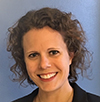4 minutes
You may have diversity initiatives and goals, but what behaviors are present and how does the climate support inclusion?
It has been wonderful to see so many organizations embracing and identifying ways they can further diversity, equity and inclusion internally and in their communities. We know that DEI is more than just helping people in an organization feel included and welcome. It’s also about broadening the pool of people we consider when making decisions about hiring or promotions.
In 2020, we’ve seen an assertion that a “lack of black talent” is the reason for insufficient diversity in some organizations, especially in leadership positions. Truth is, if you can’t find talent that doesn’t look like you, you’re not giving your hiring efforts enough attention. Are you telling the same people you always tell when you have an open position when, if you think about it, you know people who might be able to help you broaden your candidate pool? Are you sending your job postings to the same places as always—to the same job sites, universities and recuiters? A great first step toward putting more diversity in your pipeline is to broadcast your job ads in different ways. Consider recruiting at historically black colleges and universities and reaching out to the National Black MBA Association, the National Association of African Americans in Human Resources, and the National Association of Black Accountants. The talent is there, if you look in the right places.
Whether recruiting externally or identifying talent internally, another obstacle to having more diverse talent pipelines lies with the unconscious biases of those charged with hiring and developing talent. As the conversations deepen around the need to have a pipeline of diverse talent, those who hire and develop talent at credit unions need to shed light on and become aware of these biases, including:
- Similar-to-me bias, which assesses an individual more favorably because he/she is similar to you
- In-group bias, which favors those perceived as part of an inner circle or similar to a group
- Confirmatory bias, which seeks out information that confirms previously held beliefs or interprets all information as confirming previously held beliefs
- Social comparison bias, which creates a tendency to dislike or feel competitive with others who may have similar skills
Through these biases, people unknowingly create a model of who should fill a role or be identified as a high potential. Whether that picture can be a copy of ourselves or the last person to hold the position, if that picture isn’t examined for bias, it can stop us from seeing individuals for who they are and instead focus us on finding someone who fits the preconception. Whether that mold looks at skill set, education, employment history, gender or race, it causes us to overlook qualified candidates because we have a preconceived view of what the needed talent should be.
In her book Why I’m No Longer Talking to White People About Race, Reni Eddo-Lodge writes, “opposing positive discrimination based on apprehension about getting the best person for the job means inadvertently revealing what you think talent looks like, and the kind of person in which you think talent resides.” It is easy to tell ourselves that we are looking for an individual with a specific set of skills or experience, but our unconscious bias can fill in the gaps and create more of an image of a person than we may intend.
To combat this, we need to become more aware of these biases—and we can do that through honest reflection. As you prepare to interview a candidate for an open position on your team, identify high potentials or promote from within, ask yourself these questions to dig into your bias and hopefully reduce your unconscious discrimination:
- What are the behaviors, skills and experience I’m looking for in a new hire, a high potential or a future leader?
- Do I have an expectation of the person that would fit this position outside of skills, including gender, race or ethnicity and other factors?
- What expectations do I have for this position, and how does each candidate fit into these expectations?
- How do the experiences of this individual align to the position or expectations of a future role?
- Is the feedback I’m seeking from others confirming my thoughts or broadening my perspective?
- What reasons can I write down to explain why this individual is/is not a high potential or ready for a promotion?
- What are three words I would use to describe this individual based on my last interaction?
As you review resumes or your current talent pool to do hiring, identify high potentials or promote someone, write down your expectations of the role and how everyone meets those expectations. Writing, even in this electronic world, allows us to see what we are thinking and can help us be more honest. If you are not willing to write down a reason why you would or would not hire, promote or develop an individual, it could be stemming from a bias that might not be steering you in the best direction.
Challenge yourself to be honest and engage others in this challenge to identify bias that might remove a deserving individual from a future within your organization. One person cannot shift an entire organization, but one person can affect others to create change.
Jennifer Stangl is director of professional development at CUES. CUES Consulting offers support in the creation of individual development plans for employees as well as resources for leaders to hone their skills in supporting employee development.
Attend a related learning event
February 17-April 13, 2021
Online program






